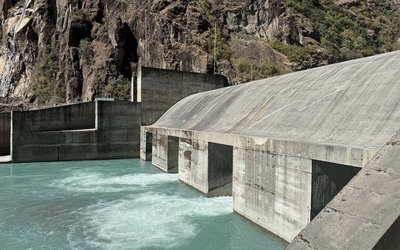More on Review





National and international media have been highlighting the tragedies of people of Nepal, especially women, girls and children, trapped in natural and human made disasters including floods, landslides, fires, epidemics, starvation, chronic malnutrition, and conflict. These are called emergencies or humanitarian situations. None of the places could be wished to be free from all sorts of emergencies in the world. Both natural and human made emergencies and humanitarian situations are happening everyday in both developed and developing countries. To some extent, these emergencies are predictable, preventable and manageable. But we can't control them fully. Hence, prevention and efficient response are always crucial everywhere. Nepal is among the most vulnerable countries in terms of such emergencies. Every year, during monsoon, Nepal witnesses devastating landslides in hilly areas and floods in 17 southern districts, where many people lose their lives, family members, and properties. On an average, Nepal loses two lives a day from natural disasters such as floods, landslides, fires, droughts, and epidemics (cholera, dengue, HIV and influenza). Likewise, estimated 3.5 million people have been struggling with moderate malnutrition due to food insecurity in Nepal (NHP-2011). Likewise, the far and mid-west have always come to the limelight in the media due to diarrheal diseases. In case of Kathmandu, the earthquake is the most dangerous threat as it falls in the tenth seismic prone zone in the world.
Regardless of the nature of disasters and places, women always are at greater risk due to gendered roles, responsibilities and expectations. Seventy five percent disaster affected people comprise of women and children (WHO, 2011). Even during disasters, women have to play many roles such as caring for children, elders, and injured. The social safety nets (celebrations of festivals, religious events, informal groups, networks, neighborhood etc), physical facilities (health, education, communication, police etc) and family breakdown (dead or separated) are also weakened and disturbed by disasters. They are the most vulnerable to sexual abuse and violence as well by many names and at various forms. Most of these women do not know much about the legal policies in general as well as responses to disaster. They are often unable to get the information well; consequently they are trapped by mental pressure as well as physical exploitation. Sometimes, they are tortured by the service providers or those involved in the response.
This is not a new issue. As gender is not considered in several other sectors, disasters prevent and response team members largely ignore policies and field level interventions to help women. Nepal Humanitarian Action Plan 2011 is an ironical example of it. The entire work plan is less gender responsive. It doesn't give space for different needs, interests, aspirations, expectations and roles of women, men and transgender (gender identity) people. The work plan mentions vaguely, or doesn't concretely spell out rights of women, children or gender based violence.Unless and until, there is a system to examine the disaggregated data of survivors (victims), it is hard to address the gender concerns. Even, this document has missed the logical links among the strategic objectives, overall activities and outcomes for women, men, transgender and children. In this scenario, how can survivors benefit from spending such a huge deal of money by various actors in regards to prevention and response of disasters?
Gender Based Violence, especially sexual violence, is serious and life threatening for women and children. GBV or sexual violence violates human rights issues as defined by national and international human rights instruments. Especially, these rights include right to personal security, right to highest attainable standard of physical and mental health, right to freedom from torture or cruel, inhuman or degrading treatment and the right to life. Most of the actors who are involved in prevention and response of disasters should consider the gender needs, interests and aspirations as well as cultural norms, values and local contexts. If that is not done, another disaster or worthless efforts, such as during the Koshi floods of 2008 would be waiting. In the flood response package, there was nothing for the mothers who had children except for sanitary towels that receivers never used due to lack of knowledge about this.In order to avoid such scenarios as well as to protect the human rights of women, children, transgender, elder, and disabled people, bthe policy makers and field workers during emergencies should follow tools such as Inter-Agency Standing Committee (IASC) guidelines, GBV Coordination Handbook, and WHO ethical guidelines. A few organizations as well as actors have started using the tools. The district disaster coordination committees, women activists, and national policy makers should know about these thoroughly. The data management system about GBV needs to upgrade so the centre can collect them and use them in an organized manner. Massive information, education and communication are also equally important in the response
and prevention of GBV in humanitarian setting.





